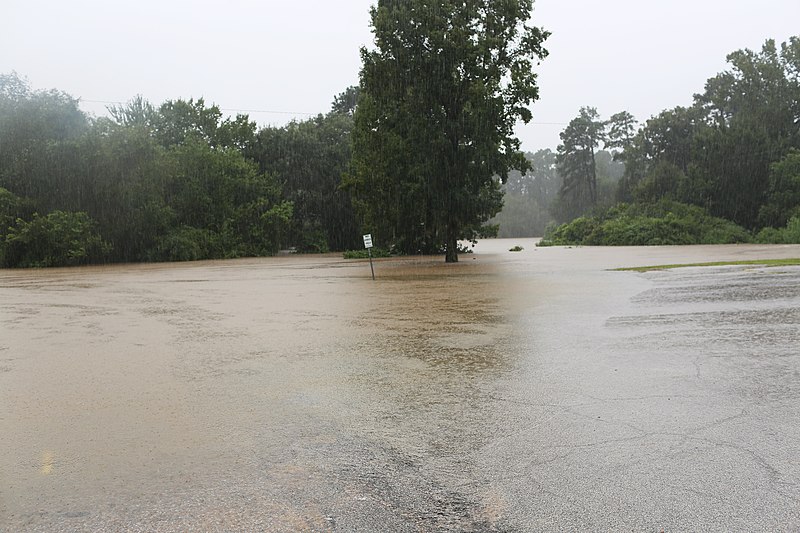Wednesday, August 30th 2017 (WASHINGTON) As Texas responds to epic flooding from the most extreme rain event in U.S. history, the focus will eventually and inevitably shift to whether there were ways to mitigate the loss of life and livelihood that Hurricane Harvey has brought.
http://foxsanantonio.com/news/
In their annual infrastructure report card, the American Society of Civil Engineers (ASCE) gave U.S. economic infrastructure a D+. For the structures that contribute to flood mitigation, dams, levees and inland waterways, they earned a D.
Part of what Hurricane Harvey revealed is that the “vulnerability” of America’s infrastructure and its advanced “state of disrepair,” said Kerry O’Hare, vice president of Building America’s Future.
O’Hare’s organization is a bipartisan coalition of elected officials focused on rebuilding America’s infrastructure, an issue she says came into stark relief during the latest storm.
“If we don’t have an infrastructure that is resilient and modern and able to withstand the challenges of the 21st century, it’s going to impact the United States, the economy, competitiveness, and the quality of life for everybody,” O’Hare stressed.
The extreme flooding in Texas and parts of Lousiana show that the infrastructure built in the last century may not be sufficient to weather the current storms. Mark Ogden, a member of the ASCE and project manager with the Association of State Dam Safety Officials, noted that after Harvey passes and reconstruction begins, there will be a greater focus on engineering against future threats.
“Everyone, I’m certain, will be looking at the flood control infrastructure in the future and what this type of event means for future planning and design,” Ogden said.
That will include rethinking the assumptions about flood management, evacuation routes and what to do about population centers located in flood-prone areas.
“Everyone is going to need to work together … to improve on what was done before, given what may be the new normal of these types of catastrophic storms,” he said.
It’s too soon to attribute the damage in Texas to faulty or poorly planned civil engineering. Houston has a history of flooding, which is why the county has invested billions of dollars in flood control, especially as Houston grew to be the fourth largest in the country.
The steps Houston has taken to mitigate losses from major weather events may not have been enough, but it is almost impossible to imagine how any city could manage the level of rainfall seen in southeast Texas over the last days.
However, civil engineers have repeatedly warned that Houston and cities like it are ill-prepared for major storm events. In its most recent flood risk management report, the ASCE graded Texas’ flood control a D. That leaves ample room for improvement with the next generation of infrastructure built post-Harvey.
“When they’re looking at rebuilding these areas, they’re going to need to look at the impacts from more severe storms,” Ogden stressed.
MORE EXTREME WEATHER:
According to climate studies from the Environmental Protection Agency, annual rainfall in the U.S. has increased every decade since the turn of the 20th century, along with the frequency of extreme rainfall events. In the past 20 years, the severity of tropical storms has increased in the Atlantic, Caribbean and Gulf of Mexico.
That same trend can be seen in Texas, according to State Climatologist John Nielsen-Gammon who documented a 20 to 40 percent increase in extreme rainfall over the past century. That also means once-in-a-century or even millennial rain events are occurring more frequently.
The same can be said of the extreme weather events hitting Louisiana. That is why, after Hurricane Katrina in 2005, the U.S. Army Corps of Engineers (USACE) was tasked with rebuilding the infrastructure in New Orleans to meet the future conditions related to climate change and extreme weather.
BUILDING FOR THE FUTURE:
Rather than building the infrastructure and flood control systems to defend against the last big storm, USACE was given $14 billion and tasked with defending against the storms of the future.
“[T]hrough the history of large infrastructure programs, engineers have relied on data from past conditions (such as precipitation, flood elevations, and terrain elevations) to inform analysis and design. In this sense, engineering has normally been done ‘looking in the rear view mirror,’” former USACE acting chief Maj. Gen. Merdith W.B. Temple wrote in 2013.
“While this practice is considered standard … for many types of projects, it should be called into question.”
Hurricane Harvey is now steering into western Louisiana where it will test the resilience of those systems.
Protecting lives and property from more frequent and more severe weather events was one of the lessons learned from Hurricane Katrina. It was also turned into policy in 2015, when President Obama signed an executive order creating a flood risk reduction standard for all federally funded projects.
On August 18, about a week before Hurricane Harvey touched down, President Trump reversed the order.
The ASCE has strongly advised the president to reinstate the measure that they believe helps end the “costly and unsustainable cycle” of rebuilding after a disaster.
After Harvey, there is an opportunity for Texas and Lousiana to improve the resilience of their infrastructure as they are forced to rebuild flood management systems, roads, and other infrastructures. However, without the flood risk management guideline in place, ASCE worries that federal funds could be spent on a new generation of projects that are as vulnerable as the ones that were destroyed.
THE COST OF 21ST CENTURY INFRASTRUCTURE:
The overall cost of rebuilding America’s infrastructure is in the trillions of dollars. ASCE estimates it would take approximately $4.6 trillion over the next ten years to meet America’s infrastructure needs. That includes about $45 billion for dams and $80 billion for levees.
When it comes to building infrastructure, especially projects that will last a half-century or more, things tend to get expensive, O’Hare noted, but she asked, “Can we afford not to do it?”
NOAA’s National Centers for Environmental Information has been keeping track of billion-dollar natural disasters in recent decades. The cost of damages from major flooding incidents in Southeast Texas and Louisiana reached $15.5 billion in 2016. And that wasn’t a particularly bad year. Since 1980, major weather and climate disasters have cost upwards of $915 billion.
Certain damage is unavoidable, of course, but there is always the question of whether it could be mitigated.
Ogden explained that “it is possible to build and to try to mitigate” the effects of extreme weather events. It’s a combination of smart development, good planning and foresight.
One hopeful sign is the fact that Donald Trump has promised $1 trillion-worth of public and private investment in the country’s infrastructure.
“For the first time in a long time, you have a president … talking a lot about the need to rebuild America’s infrastructure,” O’Hare said, adding she is pleased that he is talking about such a large dollar sum.
Despite the challenges emerging after Hurricane Harvey, O’Hare is optimistic that the president could send Congress a major infrastructure bill in the next year or two and make good on his trillion-dollar pledge.
In the meantime, when Congress returns next week they are expected to begin work on what will certainly be a substantial infrastructure package, a relief and reconstruction bill for Texas.






